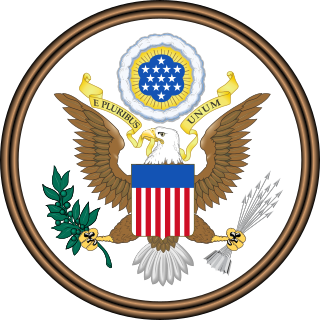Top Qs
Timeline
Chat
Perspective
Economic Growth, Regulatory Relief, and Consumer Protection Act
United States Law From Wikipedia, the free encyclopedia
Remove ads
The Economic Growth, Regulatory Relief, and Consumer Protection Act (abbreviated EGRRCPA; Pub. L. 115–174 (text) (PDF), S. 2155) was signed into law by President Donald Trump on May 24, 2018.[1][2][3][4] The bill eased financial regulations imposed by the Dodd–Frank Wall Street Reform and Consumer Protection Act after the 2008 financial crisis.
Specifically, the bill raised the threshold from $50 billion to $250 billion under which banks are deemed too big to fail. For the vast majority of banks, the bill cut back on requirements for reporting of mortgage loan data.[5] The bill also eliminated the Volcker Rule for small banks with less than $10 billion in assets.[6]
The Act was the most significant change to U.S. banking regulations since Dodd–Frank.[5][7][8] Barney Frank, leading co-sponsor of Dodd-Frank, said parts of the original law were a mistake and supported the legislation.[9][10][11][12]
Remove ads
Legislative history
In the House, the bill passed by a 258-159 vote with support from all but one Republican (the exception being Walter B. Jones Jr.) and 33 out of 193 Democrats. In the Senate, the bill passed by a 67-31 vote with support from all Republicans and 17 out of 47 Democrats. Within the Democratic caucuses, progressives strongly opposed the bill.[13][14]
Aftermath
Summarize
Perspective
In the wake of the 2023 banking crisis, some banking experts said that Silicon Valley Bank and Signature Bank would have managed its risks better had Dodd-Frank "not been rolled back under President Trump," however other experts have disputed this assertion as Silicon Valley Bank was still required to undergo periodic stress testing under the Act.[15]
A lengthy report done by Michael S. Barr of the Federal Reserve Board of Governors, stated that Silicon Valley Bank (SVB) had failed due to a "textbook case of mismanagement" and that top leaders at the bank "failed to manage basic interest rate and liquidity risks".[16] Barr also found that the Federal Reserve Supervisors had failed to take action against SVB and that even SVB's own board of directors failed to watch over leadership and that SVB's standards were "too low" demonstrating the weaknesses in regulation and lack of supervision, which was exaggerated by the loosening of the Dodd–Frank Wall Street Reform and Consumer Protection Act. In his analysis Barr said that the SVB Board response to the Economic Growth, Regulatory Relief, and Consumer Protection Act (EGRRCPA) led to a "less assertive supervisory approach", as well as reducing standards and increasing complexity, which left SVB with many vulnerabilities. Other factors were the combination of social media posts of concern about a bank run, as depositors quickly started withdrawing funds, speeding up the bank run and causing this to ripple to other banks.[17]
SVB’s CEO Greg Becker supported the rollback and explicitly lobbied for its passage,[18] due to the reduced frequency and number of scenarios required for stress testing implemented under the Dodd–Frank Wall Street Reform and Consumer Protection Act for banks with under $250 billion in assets.[19][20] The Federal Reserve Bank of San Francisco did have discretion to annually examine any bank with $100 billion in assets.[21]
Remove ads
References
External links
Wikiwand - on
Seamless Wikipedia browsing. On steroids.
Remove ads

